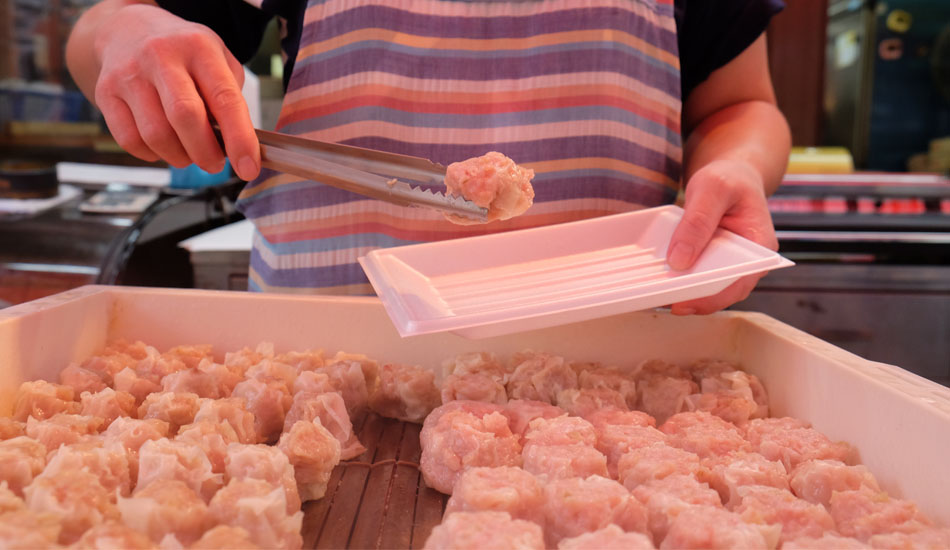Tezukuri no Mise Sakai: A Fifty-Year-Old Shumai Legacy
Published: June 14, 2017
The warmth from Tezukuri no Mise Sakai radiated into the Sunamachi Ginza Shopping Street. The shop is most famous for its gyoza and shumai, which were featured in a popular manga. However, in the summer the Sakai family keeps the shumai inside waiting to be steamed in the evening so they don’t spoil in the heat. The first things that attracted my eye when walking up, then, were the array of crisp, deep golden fried foods, and the pictures on the back wall of famous Japanese idols.
“My daughters put those up there,” Mrs. Sakai explained. “They’re from a while back.”
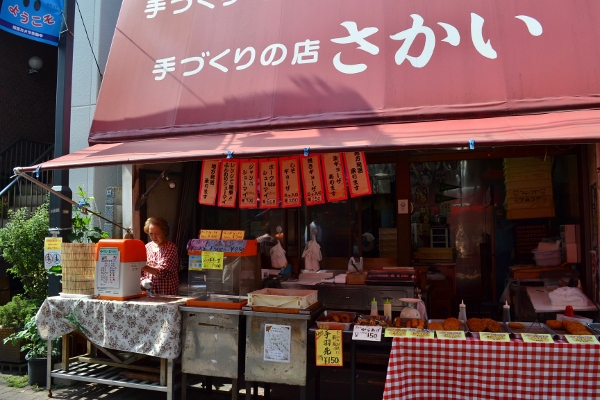
If you’re looking for a quick but hearty snack or a nice supplement to bring back for dinner, Tezukuri no Mise Sakai is a pretty good place to swing by. I went with my friend Mimmy, and we each tried a little bit of what the Sakai family had to offer.
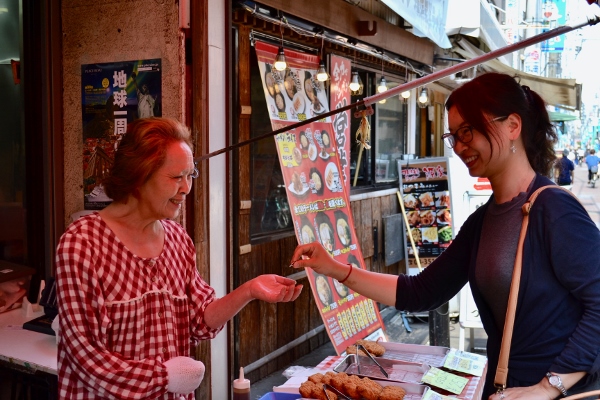
I had the minced tuna katsu, which was sizeable for only 250 yen. The tuna had lost none of its juiciness in the frying process, and the breading was still crisp.
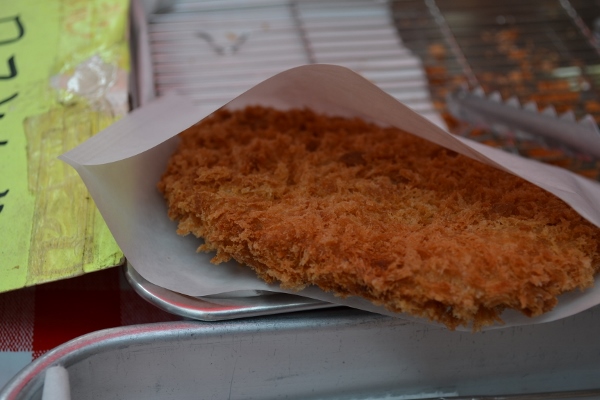
Mimmy tried the fried quail eggs, which were evidently also fantastic.
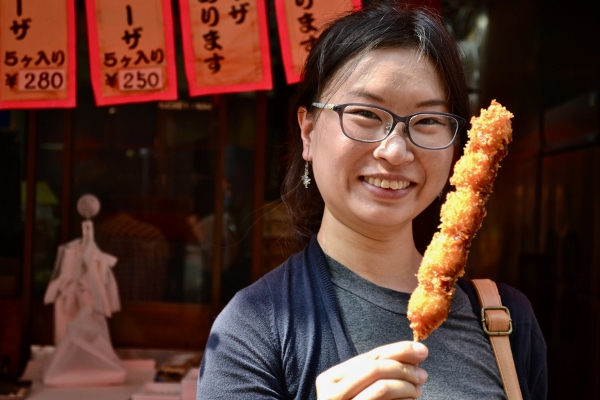
When asked what the most popular item for sale was, Mrs. Sakai answered, of course, “The gyoza and the shumai.”
With that in mind, we set out to find out a little bit more. Mrs. Sakai was gracious enough to let us poke around the back of the store where the shumai were made. Before the kids of the family go to school in the mornings, the adults sit in the shop and fold the gyoza and shumai. After the kids leave, they go back to shop business, placing the shumai on these industrial sized sheets and preparing all the different katsu.
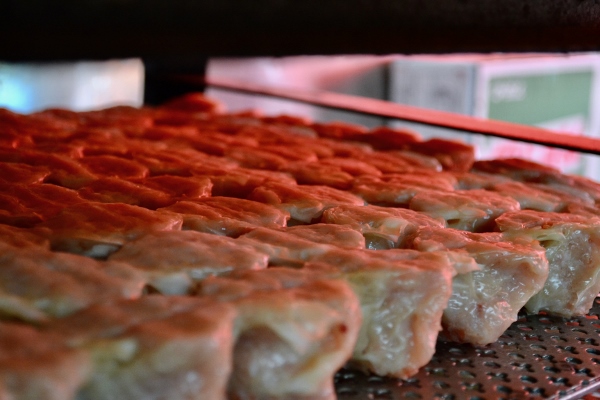
The recipe has been used for 50 years, Mrs. Sakai told us, and hasn’t changed. And as soon as I tried one, I thought… No wonder.
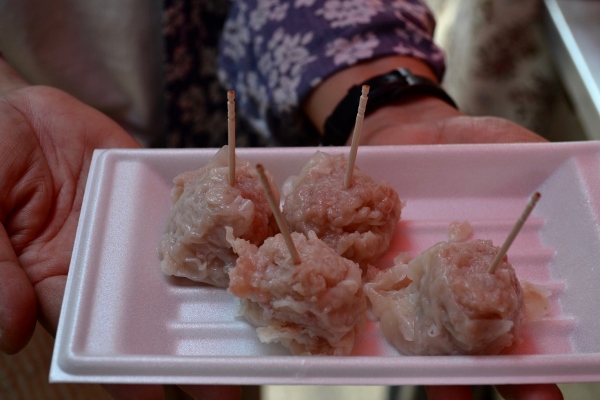
After we’d tried the katsu, Mrs. Sakai brought out a few sheets of shumai and laid them on top of something I had thought was just a storage container. In the bottom container was water, and after laying the shumai on top and putting a lid on, Mrs. Sakai heated the water so the shumai could steam through. Evidently the steamer design hadn’t changed much either.

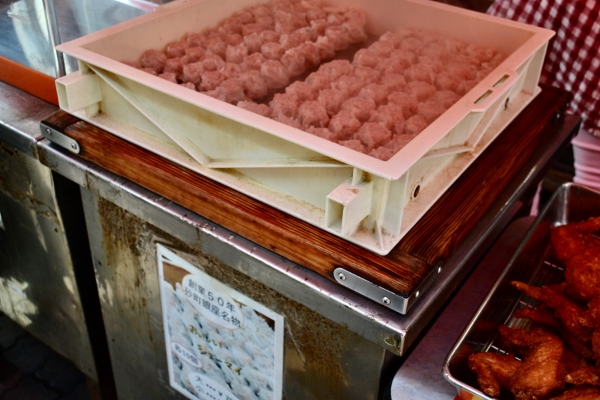
The batch we tried had fresh herbs mixed in, but no one flavor overpowered any other—they balanced perfectly in two-bite-sized rolls of dough and pork.
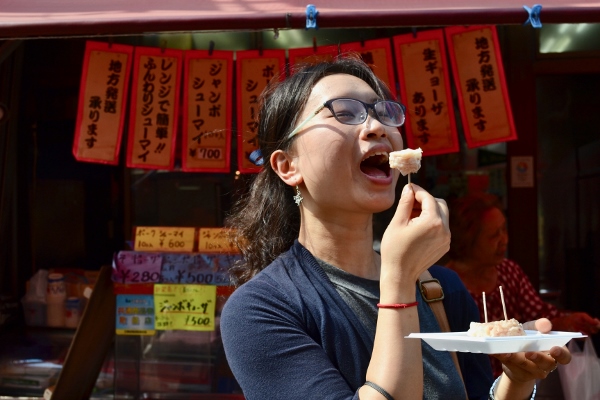
With a 50-year recipe that, in my amateur opinion, neared shumai perfection, it’s clear why Tezukuri no Mise Sakai has been a mainstay in the neighborhood for so long. And seeing a dozen customers come and go while we ate and took pictures, watching as they went down the line of fried foods picking them out while Mrs. Sakai briskly calculated the total price, I imagine the store will continue to last into the future. Here’s hoping for another 50 years of delectable shumai!
Story and Photos by Kate Montgomery

